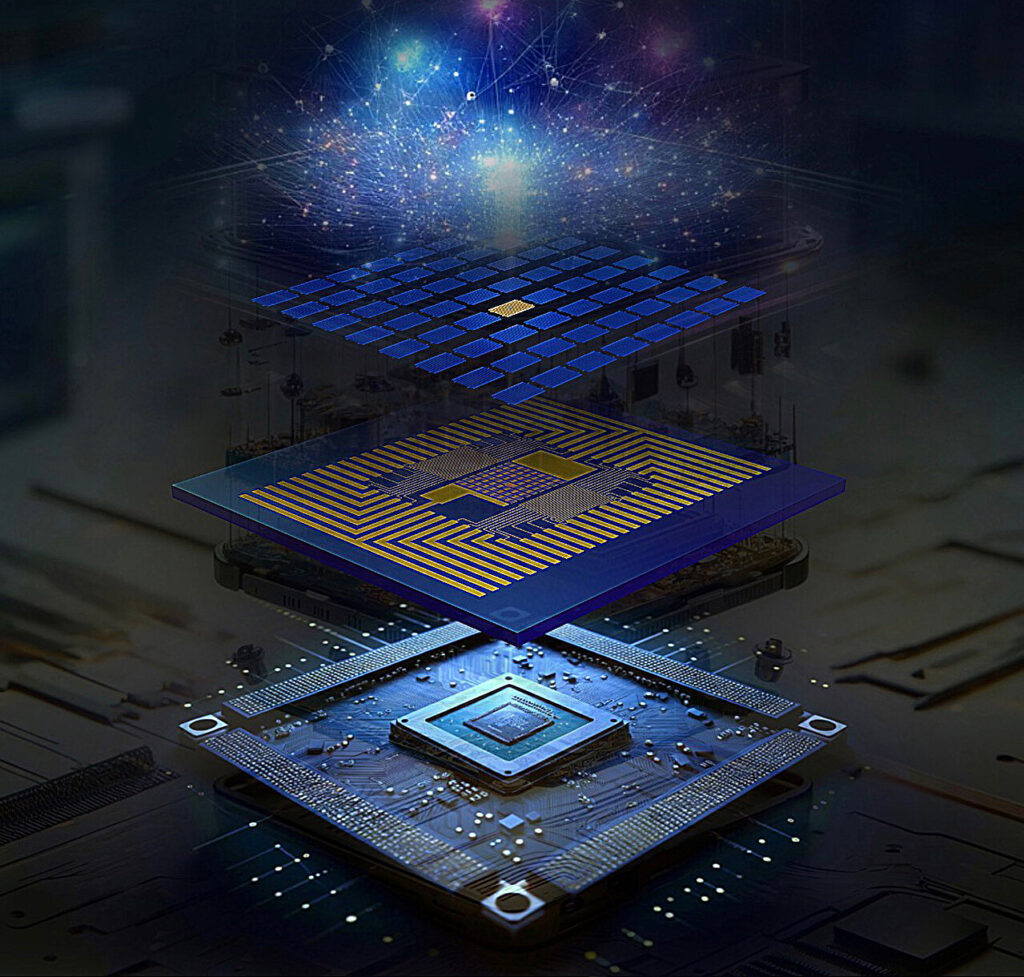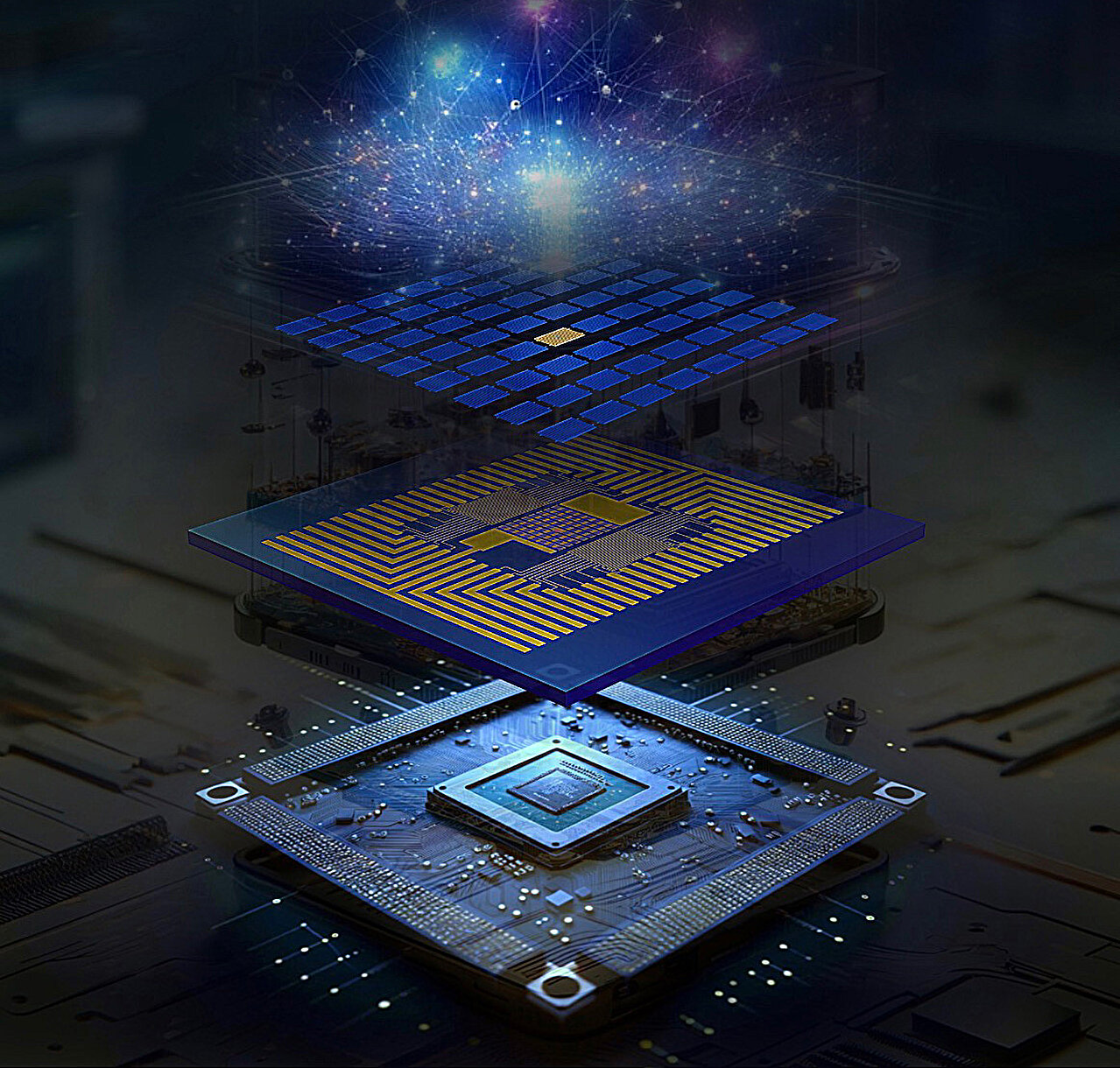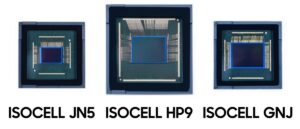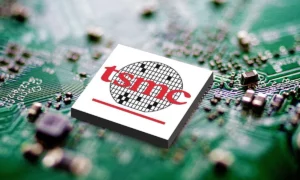Introduction
Quantum computers have the potential to revolutionize various fields by solving problems that are impossible for even the most powerful classical computers. However, building a large-scale quantum computer with millions of interconnected qubits has been a significant challenge.
Researchers from MIT and MITRE have made a significant breakthrough in quantum computer hardware by creating a scalable, modular architecture. This new design, called a “quantum-system-on-chip” (QSoC), integrates thousands of interconnected qubits onto a single chip, overcoming a major hurdle in building large-scale quantum computers.

Researchers developed a modular fabrication process to produce a quantum system-on-chip which integrates an array of artificial atom qubits onto a semiconductor chip. Credit: Sampson Wilcox and Linsen Li, RLE.
Here’s what this means:
Scalability: Current quantum computers only have a handful of qubits, limiting their processing power. The QSoC architecture allows for thousands of qubits on a single chip, paving the way for much more powerful machines.
Modular Design: The modular design enables researchers to easily connect multiple QSoC chips together, forming an even larger quantum computer. This allows for a gradual increase in processing power as needed.
Precise Control: The QSoC architecture allows for precise control of the qubits, which is essential for performing complex quantum computations.
This research is a major step forward in developing practical quantum computers. With continued progress, quantum computers could revolutionize fields like medicine, materials science, and artificial intelligence.
Follow us on Linkedin for everything around Semiconductors & AI
Why is QSoC Important?
Building a powerful quantum computer requires a massive number of qubits, the quantum equivalent of bits in classical computers. These qubits require precise control and interconnection to perform computations.The QSoC architecture addresses this challenge by:
Scalability: The design allows for the easy addition of more qubits, enabling the creation of larger and more powerful quantum computers.
Modular Design: Multiple QSoC chips can be connected using optical networks, forming a large-scale quantum communication network.
Precise Control: The QSoC architecture provides a way to precisely tune and control a dense array of qubits, a crucial aspect for reliable quantum computing.
Read More: What are 6 Types of Data Center: Difference & Similarities – techovedas
Overcoming Challenges: Addressing Inhomogeneity
Researchers chose to use diamond color centers for their qubits because they are easy to scale up. They had already used these qubits to make quantum chips with photonic circuits.
Diamond color centers are like “artificial atoms” that store quantum information. Since they are solid-state systems, they can be made using the same processes as regular semiconductors. They are also small and maintain their state for a long time, thanks to the clean environment in the diamond.
Moreover, diamond color centers can connect with other qubits that are not next to them through photonic interfaces.
“Normally, people think that the differences between diamond color centers are a disadvantage compared to identical quantum memories like ions and neutral atoms. But we use this diversity to our advantage. Each ‘artificial atom’ has its own frequency, so we can communicate with them by adjusting the voltage to match a laser, like tuning a radio,” says Englund.
This is hard because they need to do it on a large scale to make up for the differences in a big system.
To communicate between qubits, multiple “quantum radios” need to be tuned to the same frequency. This becomes almost certain when using thousands of qubits.
The researchers overcame this challenge by putting a large array of diamond color center qubits onto a CMOS chip, which controls the voltages. The chip can quickly and automatically adjust the voltages, enabling all qubits to connect.
“This solves the problem of differences in the system. With the CMOS platform, we can quickly and dynamically tune all the qubit frequencies,” explains Li.
Building the QSoC: A Lock-and-Release Process
The researchers developed a unique fabrication process to build the QSoC:
Diamond Microchiplet Creation: An array of diamond color center microchiplets is fabricated from a solid diamond block.
Nanoscale Optical Antennas: Researchers design and fabricate these antennas to efficiently collect light emitted by the qubits.
CMOS Chip Design: The chip layout includes microscale sockets that match the diamond microchiplet array.
Lock-and-Release Transfer: A precise process “locks” the diamond microchiplets into the sockets on the CMOS chip.
Since the bonding is weak, releasing the bulk diamond leaves the microchiplets behind.
This process allows for the transfer of thousands of diamond microchiplets onto the CMOS chip in a single step, significantly reducing fabrication time.
“We will need a large number of qubits, and great control over them, to really leverage the power of a quantum system and make it useful. We are proposing a brand-new architecture and a fabrication technology that can support the scalability requirements of a hardware system for a quantum computer,”
~Linsen Li, Lead author of a paper on this architecture.
Read More: 65% and Counting: China’s PCB Grip on Europe Tightens – techovedas
Looking Ahead: The Future of QSoC
The researchers demonstrated a QSoC with over 4,000 qubits, all tuned to the same frequency.Their work opens doors for further improvements:
Material Refinement: Using better materials for qubits could enhance performance.
Control Process Refinement: More precise control techniques could further improve qubit functionality.
Application to Other Systems: The QSoC architecture might be applicable to other solid-state quantum systems.
Read More: South Korea Announces $19 Billion Aid Package for Semiconductor Industry – techovedas
What’s the big deal about this?
The big deal with the new modular, scalable hardware architecture for quantum computers is that it tackles two major roadblocks: size and complexity. Here’s why it’s a significant advancement:
More Power: Current quantum computers are limited by the number of qubits they can handle, typically just a handful. This new design allows for thousands of qubits on a single chip, making them exponentially more powerful. Imagine the difference between a simple calculator and a high-end computer. That’s the kind of leap this could represent.
Easier to Build Bigger Machines: The modular design is like building with Legos. You can connect multiple chips together to create an even more powerful quantum computer. This allows for a gradual increase in power, unlike the current all-or-nothing approach.
Practical Applications: With more power and easier construction, quantum computers become more realistic for solving complex problems. This could lead to breakthroughs in medicine, materials science, and artificial intelligence, completely revolutionizing these fields.
Think of it as this: we’re transitioning from tinkering with a few transistors on a breadboard to building actual integrated circuits. This paves the way for much more powerful and practical quantum computers in the near future.
Conclusion
This breakthrough in quantum computing hardware paves the way for the development of powerful quantum computers with the potential to tackle problems beyond the reach of classical computers.
The modular and scalable QSoC architecture is a significant step forward in realizing the potential of quantum computing and its revolutionary impact on various scientific and technological fields.







